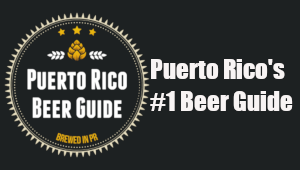 On Sunday August 8, 2010 you can get the chance to see one of the islands most endangered species the Puerto Rican Parrot (Amazona Vittata) at El Yunque’s El Portal Rain Forest Center.
On Sunday August 8, 2010 you can get the chance to see one of the islands most endangered species the Puerto Rican Parrot (Amazona Vittata) at El Yunque’s El Portal Rain Forest Center.
Ricardo Valentin, DNER Rio Abajo State Forest Aviary Manager will be bringing the parrot to the visitor center from 9am – 2pm and will present a 45 minute audio-visual lecture about the Puerto Rican Parrot at 11am.
This is a great opportunity to get to see a Puerto Rican Parrot in person.
Puerto Rican Parrot Facts:
An endemic bird to Puerto Rico only found in the El Yunque Rainforest
Scientific Name: Amazona Vittata
Taino Indian Name: Iguaca
Adult Size: 11-12 inches
Colors: bright green bird with a red forehead, a white ring around the eye, and blue primary feathers
Usually form long lasting pairs and stay together year around except when the female is incubating eggs.
They nest in tree cavities around February and March until June
Female lays two to four eggs
 When the island was colonized by the Spanish it is estimated that the population of Puerto Rican Parrots was around million individuals
When the island was colonized by the Spanish it is estimated that the population of Puerto Rican Parrots was around million individuals
During the 1950’s the population had dropped to around 200 wild parrots. By 1989 this had dropped further to 47 birds. On September 18, 1989, the east coast of Puerto Rico was hit by Hurricane Hugo leaving only around 23 surviving parrots.
Thanks to the conservation efforts here in Puerto Rico it is estimated that there are now are around 34 to 40 Puerto Rican Parrots in the wild and 143 individuals in captivity.
Sunday August 8, 2010 is your chance to see one of these endangered parrots ‘in person’
What: Puerto Rican Parrot Viewing
Where: El Yunque – El Portal Rain Forest Center
When: Sunday August 8, 2010
Cost: Entrance Fee to Visitor Center, $4.00 for adults, $2.00 over 65 and Children under 16 are Free
The El Yunque El Portal Rain Forest Center is located at Km 4.0 on PR road 191 and you can find it on our interactive map here
Resources: US Forest Services and wikipedia








